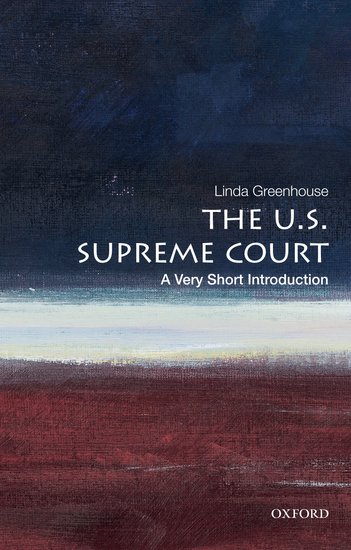Responsible for some of history’s most defining moments such as Brown v. Board of Education and Bush v. Gore, The Supreme Court today, housed in a majestic building on Capitol Hill, with more than 400 employees, bears little resemblance to the ill-defined institution the Constitution’s Framers launched with the expectation that it would be the weakest, “least dangerous,” of the three branches. Pulitzer-Prize winning New York Times Supreme Court Reporter for three decades and author of The U.S. Supreme Court: A Very Short Introduction, Linda Greenhouse draws on her deep knowledge of the court’s history and of its written and unwritten rules to show how the Supreme Court really works. She will be speaking at The Cooper Union on Tuesday, March 20 at 6:30 p.m. and Politics & Prose on Tuesday, April 10 at 7:00 p.m, and here’s a preview of some of the interesting information she’ll share.
• Justice Elena Kagan is responsible for bringing the first frozen-yogurt machine to the cafeteria of the Supreme Court.
• There are no formal requirements for becoming a Supreme Court justice. Everyone who has served on the Court has been a lawyer. However, many of the early justices were not law school graduates; as was customary, they had “read law” under the supervision of a member of the bar.
• During the 2010-11 term, 7,857 new petitions for review reached the Court. Carrying over 1,209 petitions from the previous term, including 40 that the justices had already agreed to hear but that had not yet been argued, the Court granted an additional 90 cases and issued a total of 78 opinions.
• Chief Justice William Howard Taft is the only person to have served both as a president and as a member of the Supreme Court.

• The Supreme Court Building has seats for 300 members of the public, who can attend arguments on a first-come, first-served basis.
• The justices sit to hear cases only for approximately 40 days a year. They sit in two-week blocs (Monday, Tuesday, Wednesday, usually only in the morning) in each month from October through April. Unless the Court directs otherwise, an argument lasts for one hour, thirty minutes to a side. On this schedule, the justices can hear about eighty cases during a term.
• The Supreme Court does not allow television or other cameras in the courtroom.
Linda Greenhouse is the author of The U.S. Supreme Court: A Very Short Introduction and she will be speaking at Cooper Union on Tuesday, March 20 at 6:30 p.m. and Politics & Prose on Tuesday, April 10 at 7:00 p.m. She was the New York Times Supreme Court correspondent for 30 years, covering thousands of decisions written by 18 different justices. She was awarded a Pulitzer Prize in journalism (beat reporting) in 1998. She in now Knight Distinguished Journalist in Residence and Joseph Goldstein Lecturer in Law at Yale Law School and writes a biweekly opinion column on the Supreme Court and the law for the New York Times web site. Her books include Becoming Justice Blackmun: Harry Blackmun’s Supreme Court Journey and Before Roe v. Wade: Voices That Shaped the Abortion Debate Before the Supreme Court’s Ruling (with Reva B. Siegel).
Subscribe to the OUPblog via email or RSS.
Subscribe to only Laws & Politics articles on the OUPblog via email or RSS.
View more about this book on the ![]()
![]()


I am a 8th grade Social Studies teacher and remembered hearing or learning that there was a bust of a Supreme Court Justice who is no longer included with other bust of past Supreme Court Chief Justices or Justices. I would appreciate it if you could confirm if I am right or wrong. I am simply stumped on finding the information on the internet. Thank You so much for your time and effort.
Robert L. Colston
CCA / 8th Grade Social Studies
Being a judge… of course, it is honorable and prestigious, but it is also a great responsibility. With my temperament I would hardly be able to calmly make decisions about someone’s lives. It’s funny, this emoji 👨⚖️👨⚖️👨⚖️ https://emojis.wiki/man-judge/ seems to be copied from my lawyer)